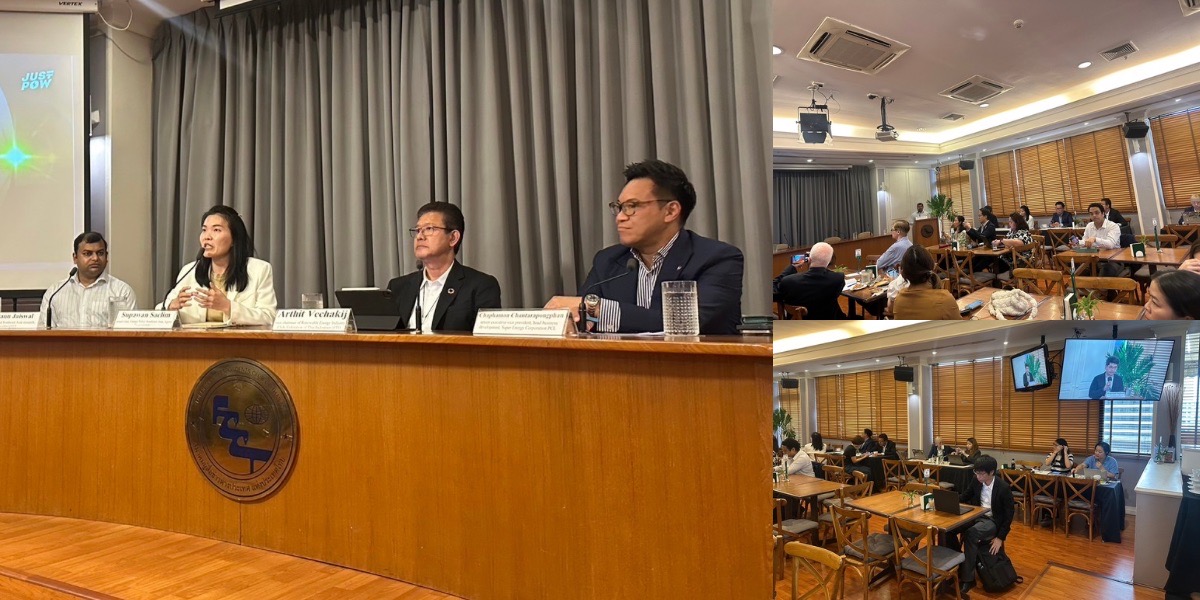During the discussion titled “Thailand: Turning Point for a Net-Zero Power Grid,” as presented by BloombergNEF (BNEF), insights were shared by Mr. Shantanu Jaiswal, Head of India and Southeast Asia Research at BNEF, Dr. Supawan Saelim, Energy Policy Project Manager for Southeast Asia at Agora Energiewende, Mr. Arthit Vechakij, Vice Chairman of the Renewable Energy Industry Club within the Federation of Thai Industries (FTI), and Mr. Chaphamon Chantarapongphan, Deputy Managing Director for Business Development at Super Energy Corp PCL. The following are the key takeaways from the event:
Heading Towards a Greener Future: Thailand’s Ambitious Energy Plans
Thailand stands as Southeast Asia’s third-largest electricity market, heavily reliant on natural gas, which currently powers nearly 70% of the nation’s electricity. Despite a 30% increase in gas-based installed capacity over the past decade, electricity demand has only risen by 15%. While renewable energy sources like wind and solar contribute less than 6% to the energy mix, their deployment is on the rise.
Reconciling Plans with Climate Commitments: A Road to 2037 and Beyond
According to data from the discourse, the nation’s current draft 2024 Power Development Plan (PDP) aims for a 51% renewable energy mix by 2037, with plans to add 24 gigawatts (GW) of solar and 5 GW of wind power. The plan also seeks to nearly double hydropower imports from Laos. However, BloombergNEF’s analysis indicates a stark gap between these targets and the needs for a net-zero scenario by 2050, which demands a more aggressive expansion of solar capacity to 250 GW, alongside 100 GW of storage.
Overcoming Barriers: The Pathway to Expedited Renewable Growth
A series of challenges impede Thailand’s energy transition. The PDP’s timeline is criticized for its sluggish progression, particularly in solar and storage deployment, which are predominantly slated for post-2030. The reliance on costly and untested technologies like hydrogen and carbon capture and storage (CCS) poses significant risks, especially since Thailand has not yet witnessed successful CCS project realizations.
Policy deficiencies, particularly the absence of robust direct Power Purchase Agreements (PPAs), hinder private investments. Furthermore, grid access expenses and the “zero export” regulation, which prevents the return of surplus solar power to the grid, exacerbate the situation. Additionally, complex land use and licensing regulations, coupled with high wheeling charges, delay project executions.
Experts also mentioned a need for an extensive overhaul and modernization of the power grid to accommodate variable renewable energies effectively. Current bureaucratic processes involving multiple agencies create bottlenecks, while centralized power planning shows resistance to change.
Recommendations for Transformation: Unleashing Thailand’s Renewable Potential
To align with its renewable ambitions, the group discussed that Thailand needs to prioritize and expedite solar and storage capacity deployment ahead of 2030. Encouraging private sector engagement across the power market can harness innovation and speed up development.
Implementing supportive policies, such as regular energy storage auctions, incentivizing small-scale battery initiatives, and clear PPA frameworks with reasonable access costs, is crucial. Removing restrictive quota limits on rooftop solar installations and reforming the grid to permit third-party access at feasible rates are also advised steps.
Moving towards a market-responsive, flexible planning approach that embraces digital technologies and distributed resources is seen as a way to bolster Thailand’s journey to a cleaner energy landscape.





